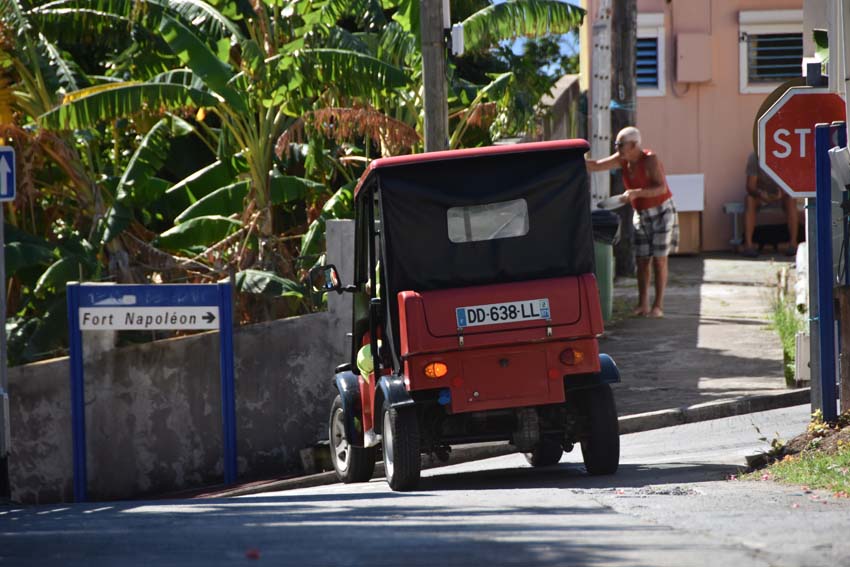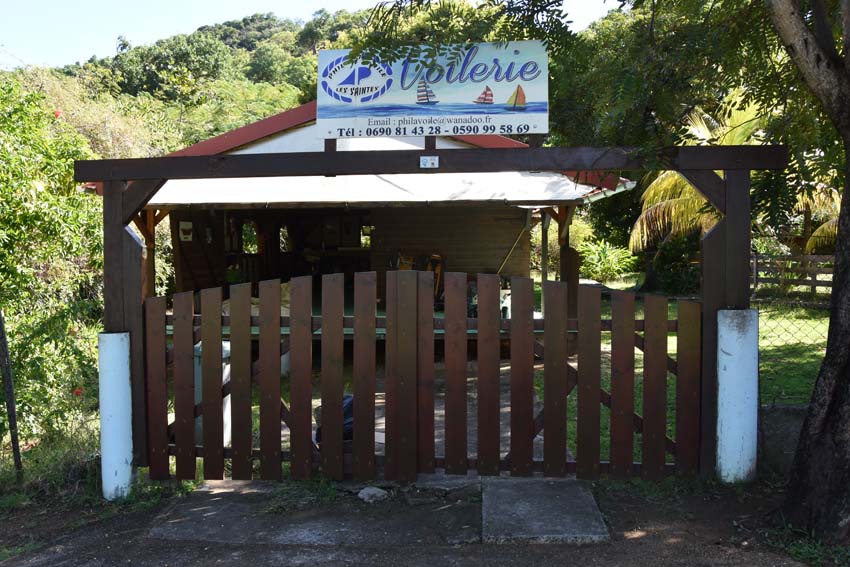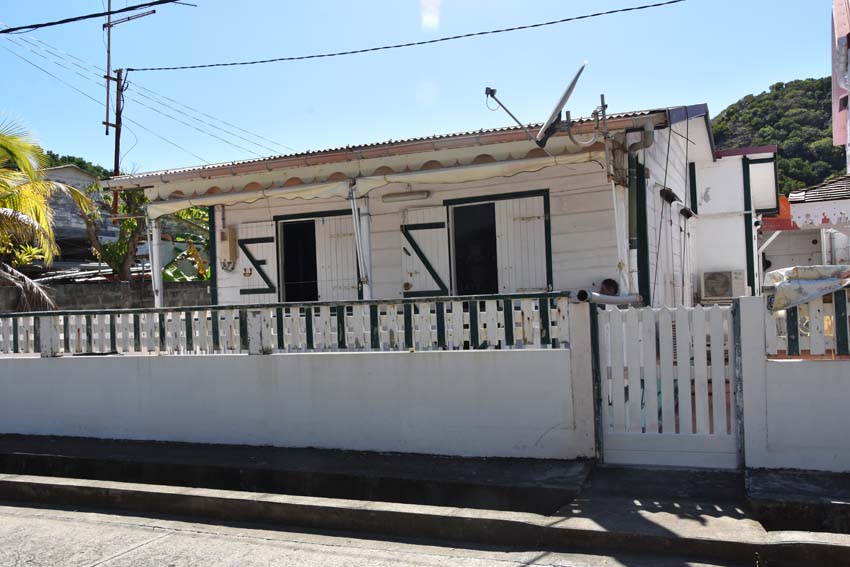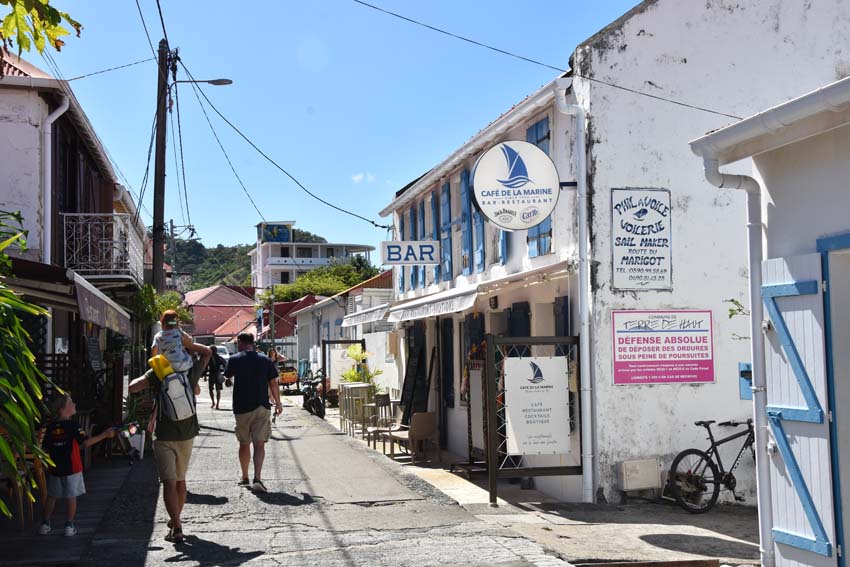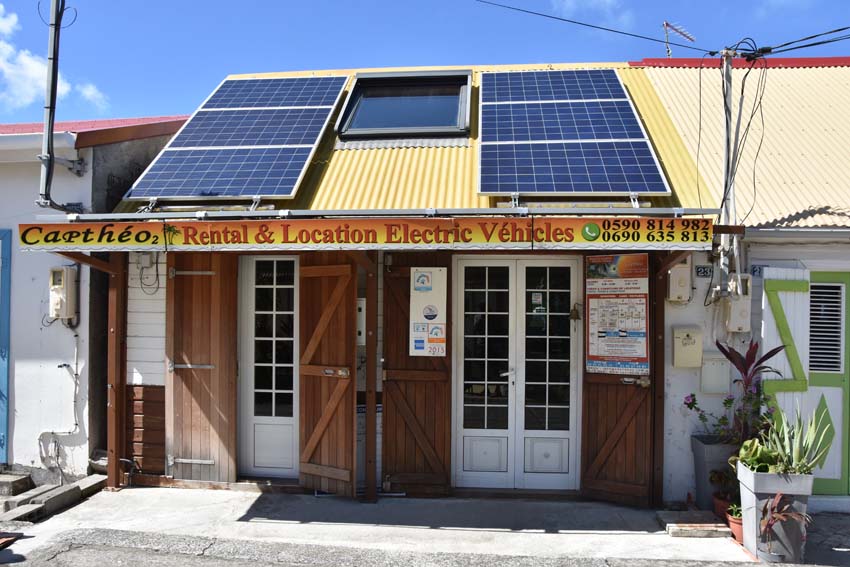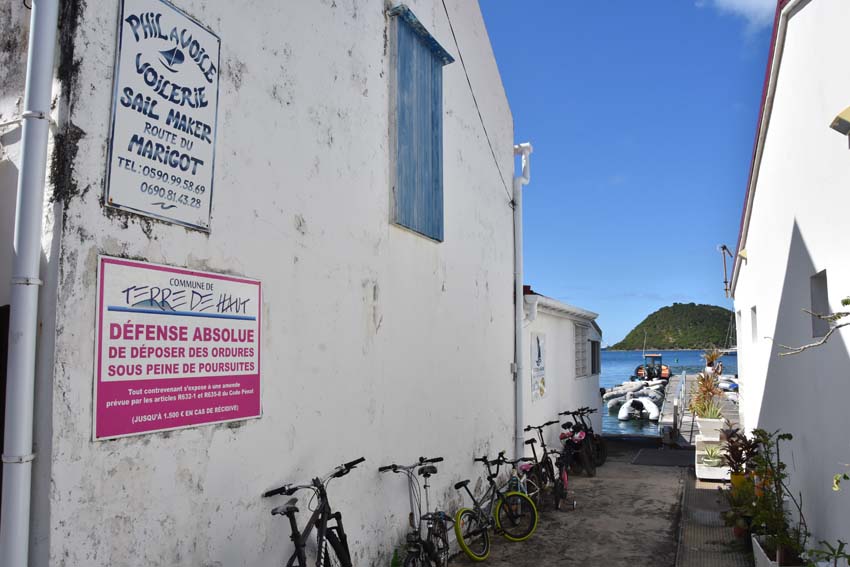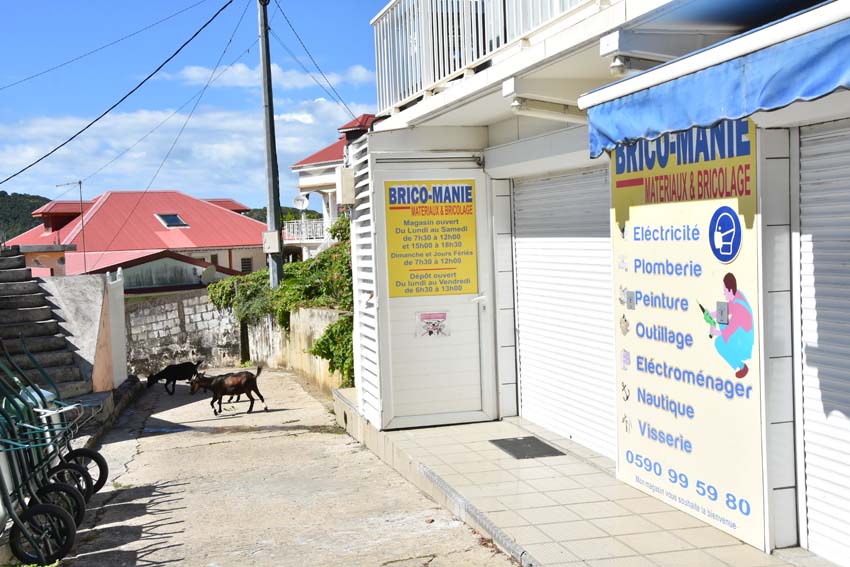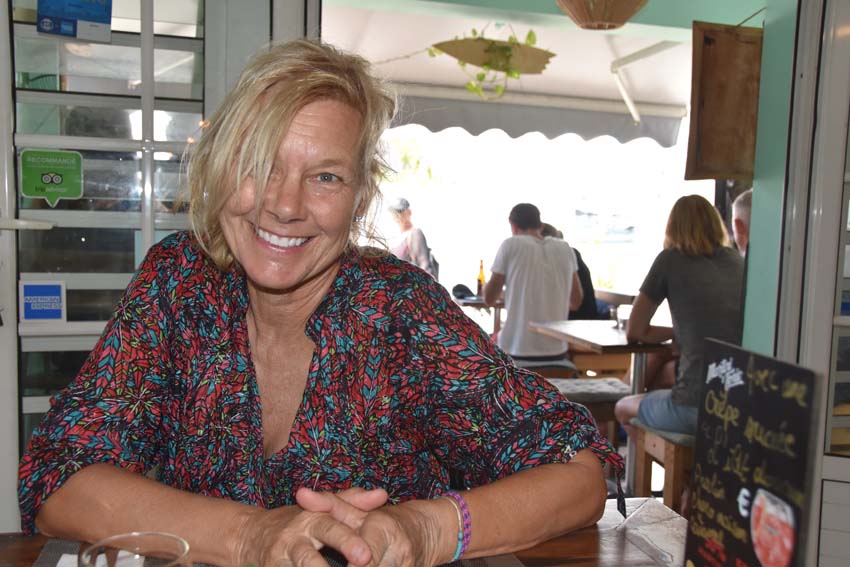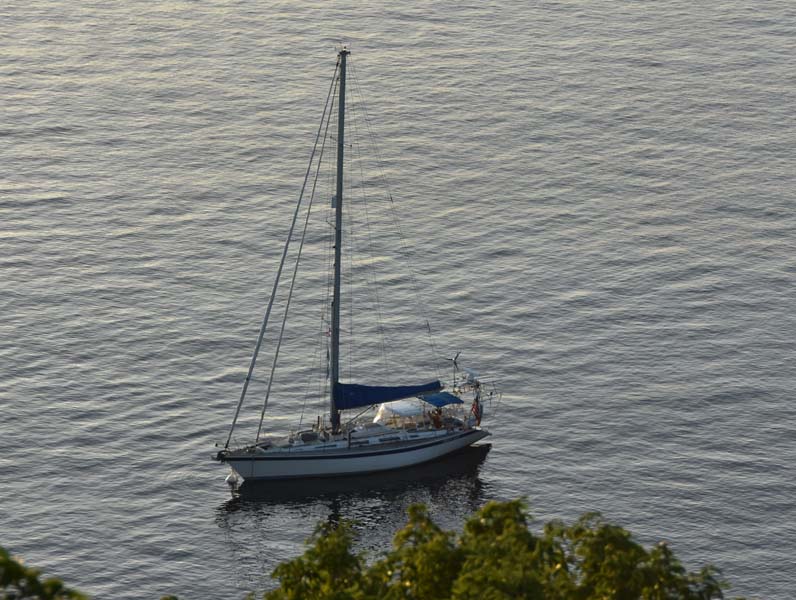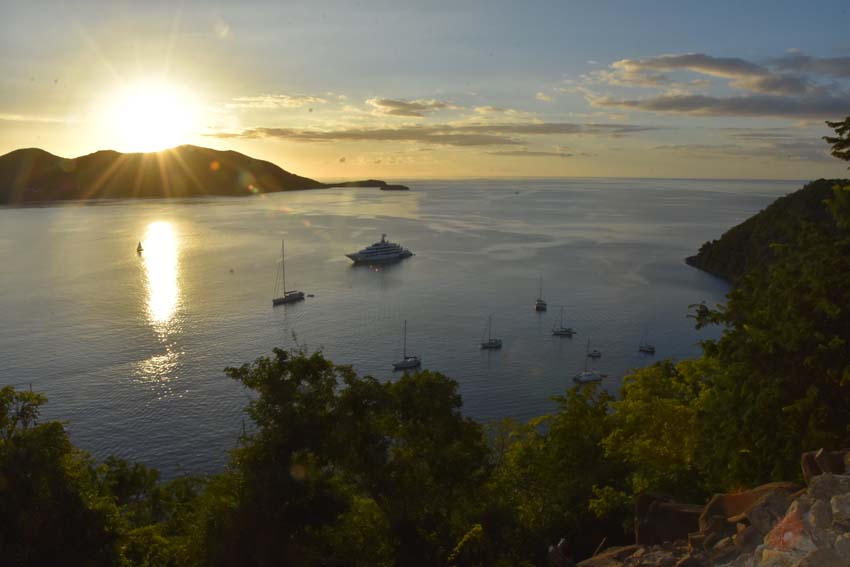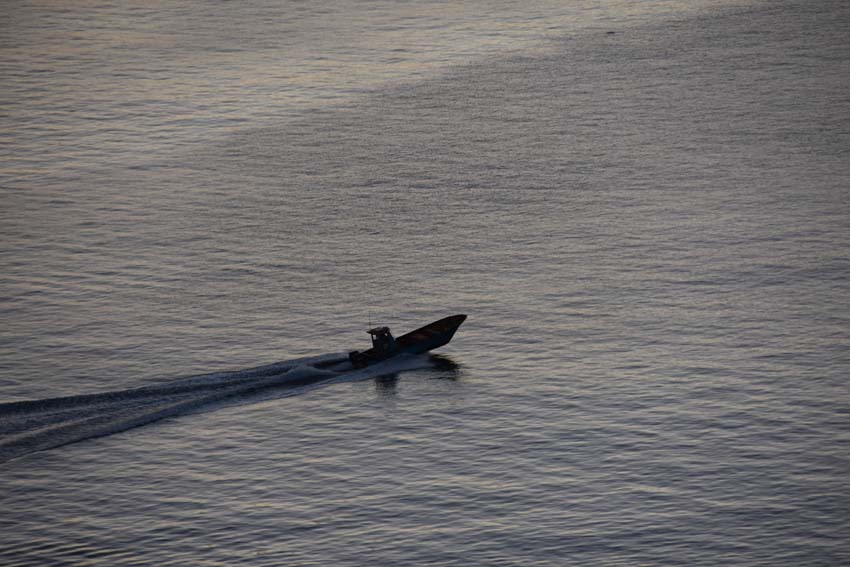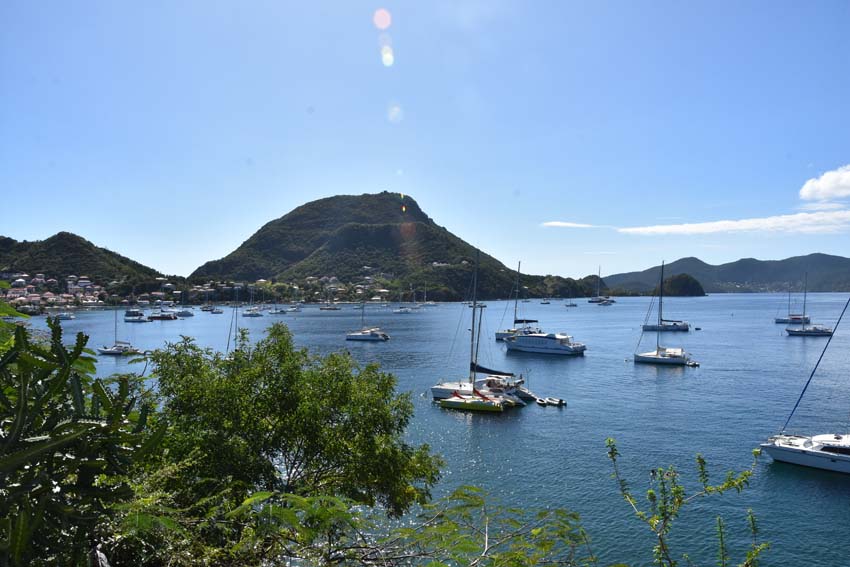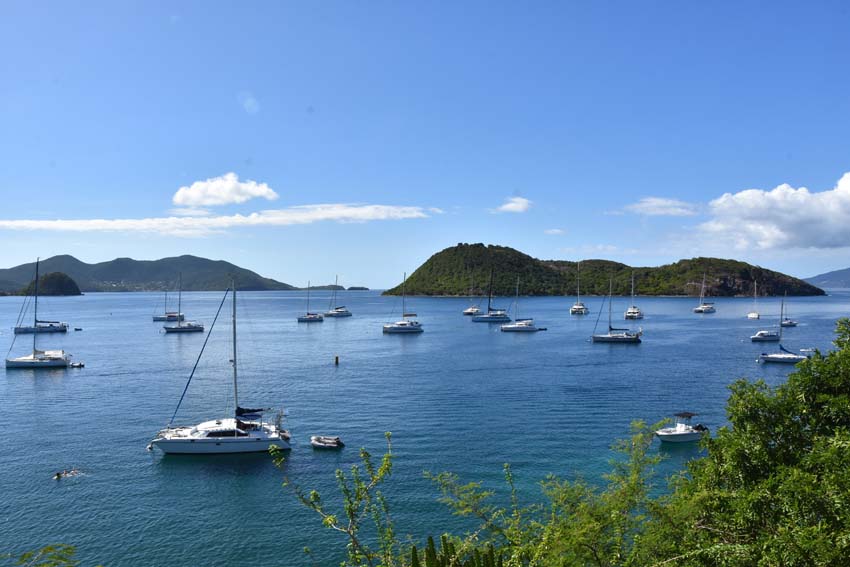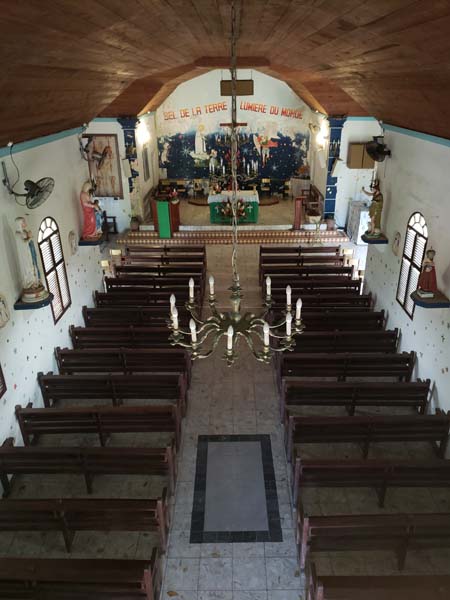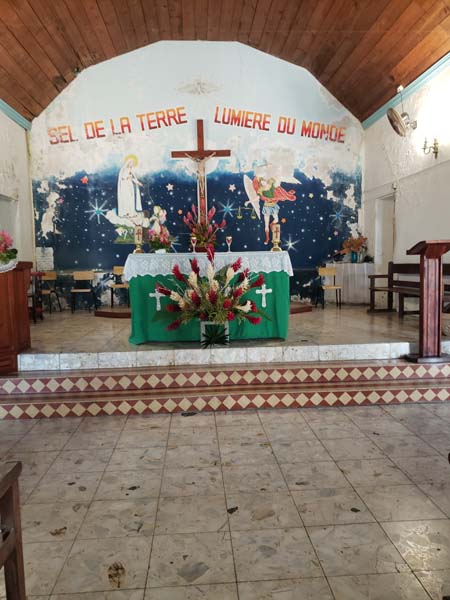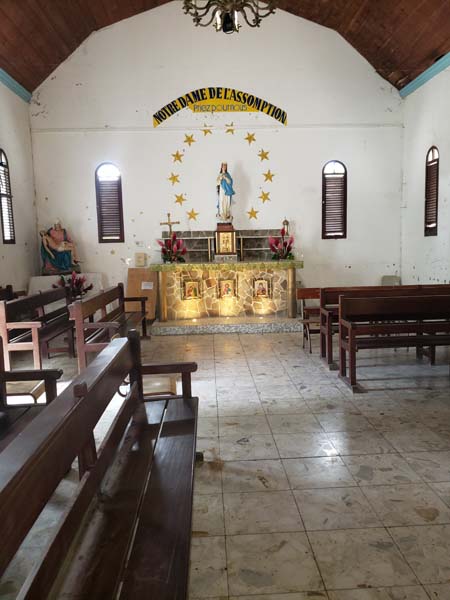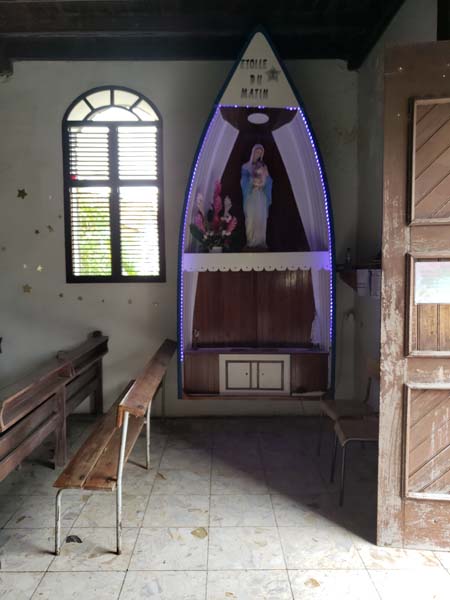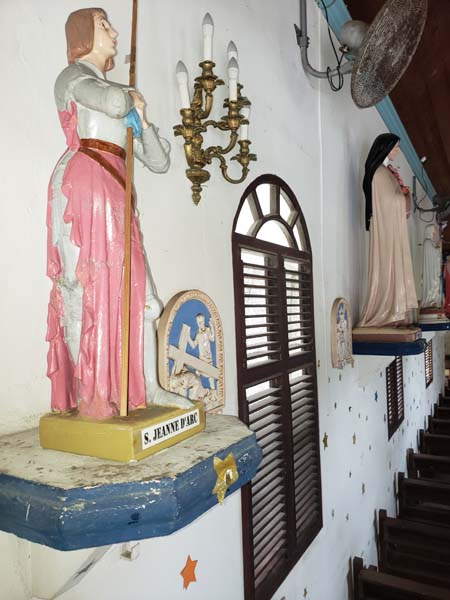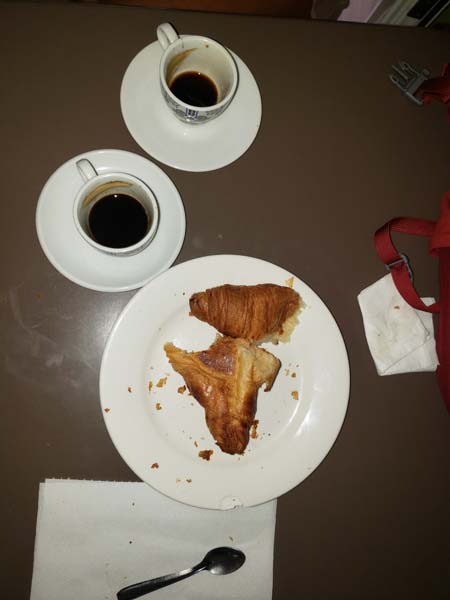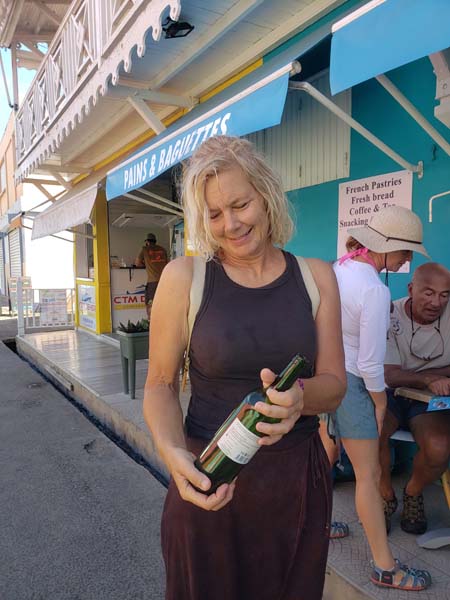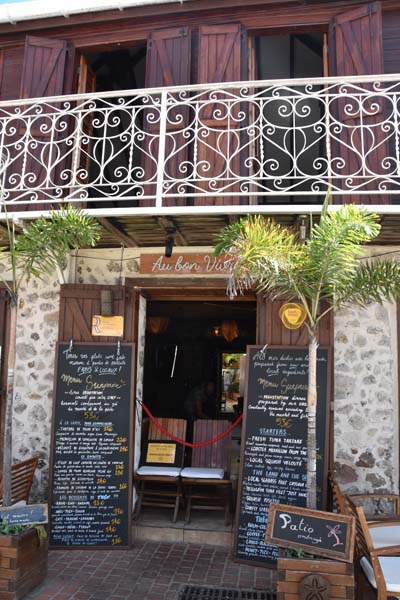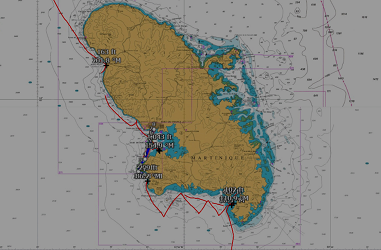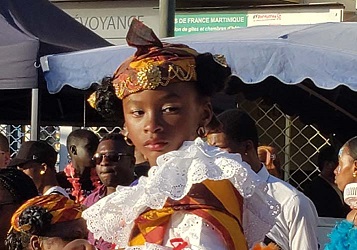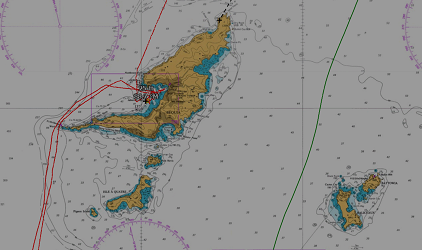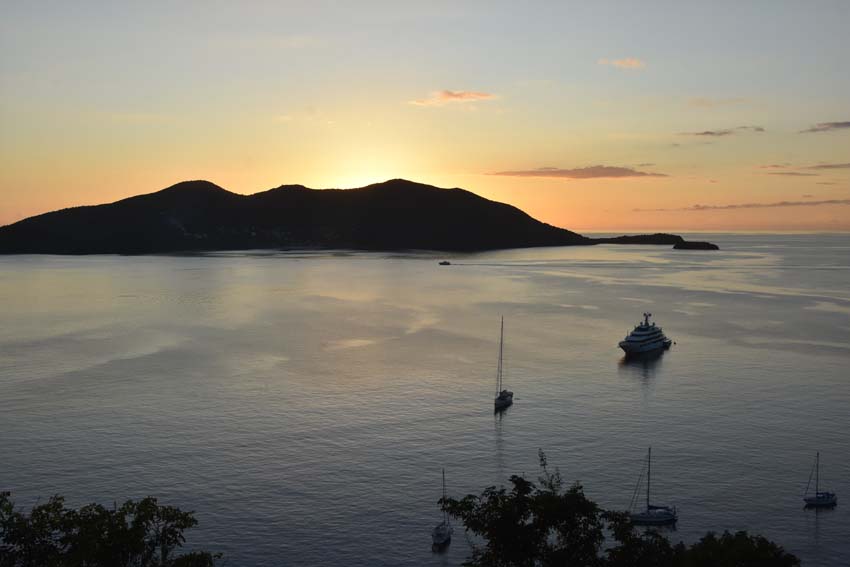
LES SAINTES
Les Iles Saintes, as it is properly named in French, but Les Saintes, The Saints are often used. Terre de Haut is the most developed island, owing to the ferry to Guadeloupe multiple times a day. THe Islands were named Los Santos upon discovery by Christopher Columbus in 1493. Subsequently, as is the case throughout the islands, battles for territory between the French and the British ensued. The result was a metling pot of French Normandy, Brittany, and Caribbean culture.
Terre de bas is less populated, has a fishing harbor and I suspect most of the locals are either second home owners or fishermen. Grand Ilet and Ilet a Cabrit are devoid of people.
The Saintes are easily accessed from Guadeloupe to the North, a short sail from Basse Terre. To the East lies Marie Galante, which we did not visit but want to see someday. It is remote enough to have maintained its charm, and its agriculture is a staple of the economy.
The Town

Situated on Terre de Haut, Fort Napoleon guads the harbor entrance. It was named after Napoleon the 3rd. Fort Josephine, was named after his grandmother. The fort was critical in the Battle of the Iles Saintes, where British forces tried to grab land from the French after the US civil war. It was used as a prison to lock up, during world war II, the french who opposed the Nazi sympathetic Vichy Government..
With its rich history, and the abundance of shops, restaurants and beaches, the amount of infrastructure, and the ferries, Terre de Haut is a popular destination which feels a bit like a shopping mall for tourists, nevertheless a relaxed one with good taste. It lives mostly off tourism, complete with moped and ebike rentals, and some less pleasant folks from Mainland France. A large cruise ship in town would make the place unpleasant, but most of the ships we saw were boutique cruises like Ponant Cruises or Star Clippers, which specialize in a more sophisticated experience for thier guests.
Ilet a Cabrit
Ilet a Cabrit features a healthy goat population, but the only people are day hikers and sunset viewers. The goats help clean up the wild growth around the fort., Fort Josephine, which offers stunning views of the harbor and the surroundings.
On Ilet a Cabrit, we see the vestiges of an old resort. The hotel, according to some, did open for a while, but the death of the owner caused the demise of the property. There are a few houses left on the road. Getting supplies, water, maintining a place in such a small island seems near imposible and all that remains are the evidence of the man's dreams. But the view from the top of the island is what brings people there today.
Anchoring
The Anchorage would seem calm in most wind conditions but it is deceiving. We once were surfing down waves in the dinghy when a strong trade wind northeast component was pushing swells into the gap between the islands. The most protected place is at the moorings east of Ilet a Cabrit. The moorings south of Fort Napoleon can get a nasty swell in those types of winds, and the same for the moorings north and west of the town dock.
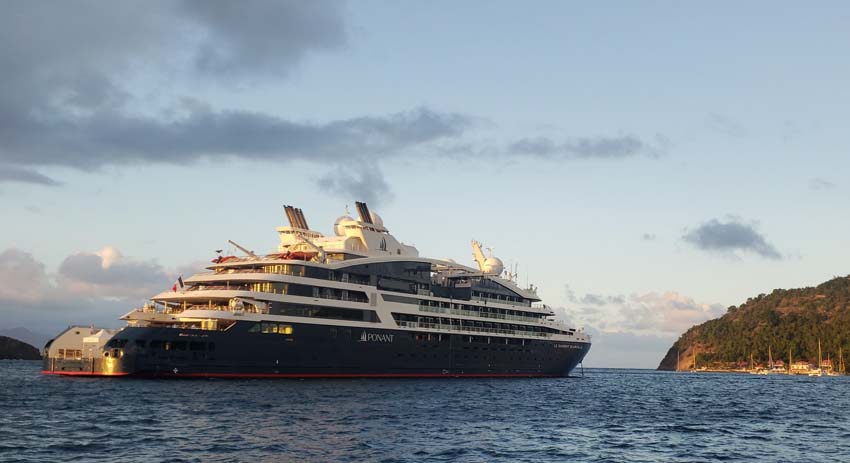
We found protection one day behind a cruise ship, as their mass makes a great wave attenuator, 25 feet deep and a few hundred feet, alas they left in the morning and the swells replaced our sleep.
Near the Pain de sucre, is a resort and some permanent moorings, in some wind conditions this is well sheltered. And, between the Pain de sucre and the moorings off the town, is a free anchoring zone, which has been designated by the local ordinance. Supposedly these methods are to protect the sea grass, but don't let anyone fool you, it is to protect the pockets of the town or the company operating the moorings on behlf of the town, both of which having had a tiff with each other the moorings were free. But the mooring field operator was chasing everyone who anchored in the no mooring zone in order to get people to take moorings when they were not filled. Whatever the reason, we ended up taking a mooring because it is simply convenient and not eggregious. A ward of caution: Because of the swell, one fellow cruising boat owner friend had a rude awakening n the middle of the night after the swell caused the mooring hoop to chafe through the line. My advice: Get a mantus metal mooring snapshackle, take a turn around the hoop and make a bowline, but avoid passing the line through the eye and back to the bow. That solution is a great one for arrivals and departures, but not such a secure approach.
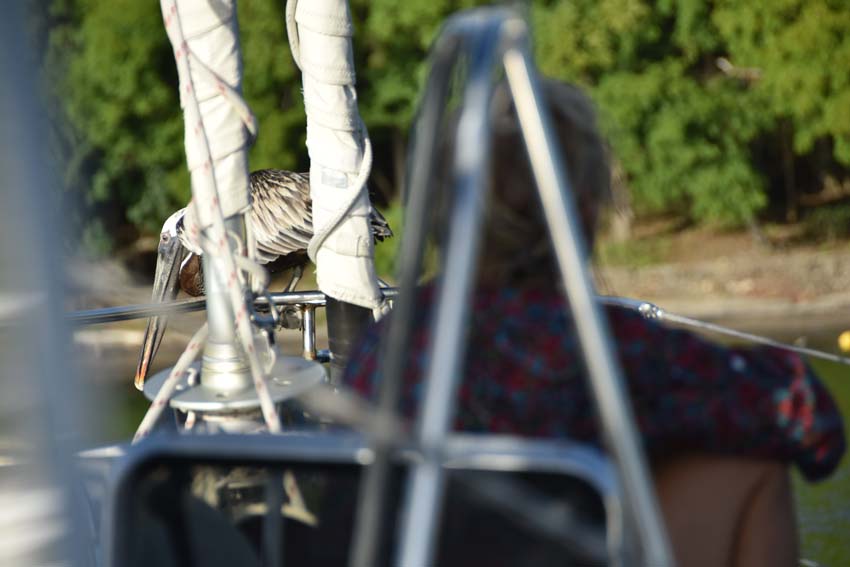
Also, I highly recommend a cormorand be invited on the bow pulpit to check that the mooring is secure.
The Church
Every town in this part of the world has a church. It is a sine qua non, modeled after the European tradition of the villages being built in clusters, as medieval europe lacked today's transportation and villages were the only way to ensure the support and safety of the community.
THe churches in the caribbean have a provincial flavor to them. These are relatively young structures compared to their mainland europe counterparts, and resources were limited over three centuries of economic development, yet there is charm in these buildings, and the pride in them is salient.
